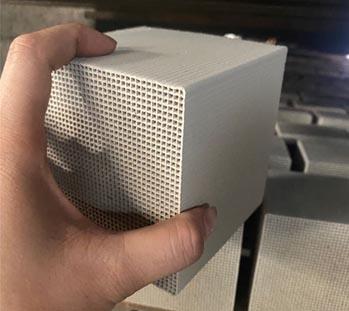
Zeolite molecular sieve Three properties of
Adsorbability
The adsorption of zeolite molecular sieve is a physical change process. The reason for adsorption is mainly a "surface force" generated by molecular gravity on the solid surface. When the fluid flows, some molecules in the fluid collide with the adsorbent surface due to irregular movement, resulting in molecular concentration on the surface, reducing the number of such molecules in the fluid to achieve the purpose of separation and removal. Since the adsorption does not undergo chemical changes, as long as the molecules concentrated on the surface are managed to drive away, the zeolite molecular sieve will have the adsorption capacity again. This process is the reverse process of adsorption, called resolution or regeneration. Since the pore diameter of zeolite molecular sieve is uniform, only when the molecular dynamics diameter is smaller than the pore diameter of zeolite molecular sieve can it easily enter the crystal cavity and be adsorbed. Therefore, zeolite molecular sieve is like a sieve for gas and liquid molecules, and whether it is adsorbed depends on the molecular size. Due to the strong polarity in the crystal cavity of zeolite molecular sieve, it can interact strongly with molecules containing polar groups on the surface of zeolite molecular sieve, or polarize polarizable molecules by induction to generate strong adsorption. The characteristic that such polar or polarizable molecules are easily adsorbed by polar zeolite molecular sieves reflects another adsorption selectivity of zeolite molecular sieves.
Ion exchange performance
Generally speaking, ion exchange refers to the exchange of compensating cations outside the framework of zeolite molecular sieve. The compensating ions outside the framework of zeolite molecular sieve are generally protons and alkali metals or alkaline earth metals, which can easily be exchanged into metal ionic zeolite molecular sieves of various valence states in the aqueous solution of metal salts. Ions are easier to migrate under certain conditions, such as aqueous solution or under higher temperature.
In aqueous solutions, zeolite molecular sieves exhibit different ion exchange properties due to their different ion selectivity. The hydrothermal ion exchange reaction between metal cations and zeolite molecular sieves is a free diffusion process. The diffusion rate controls the exchange reaction rate.
Catalytic performance
Zeolite molecular sieves have unique regular crystal structures, each of which has a certain size and shape of the pore structure, and has a large specific surface area. Most zeolites have strong acid centers on the surface and strong Coulomb fields in the crystal pores for polarization. These characteristics make it an excellent catalyst. Heterogeneous catalytic reaction is carried out on the solid catalyst, and the catalytic activity is related to the size of the crystal pore of the catalyst. When zeolite molecular sieve is used as catalyst or catalyst carrier, the catalytic reaction is controlled by the crystal pore size of zeolite molecular sieve. The size and shape of crystal pores and channels can play a selective role in the catalytic reaction. Under general reaction conditions, zeolite molecular sieves play a leading role in the reaction direction, showing shape selective catalytic performance, which makes zeolite molecular sieves have strong vitality as a new catalytic material.
